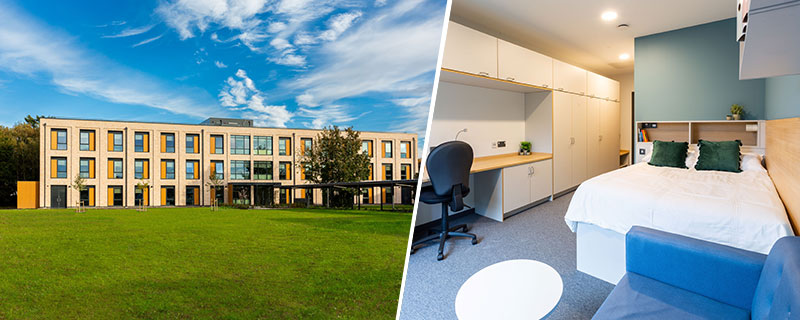Construction of innovative Army accommodation
Reds10 begins construction of innovative and highly sustainable Army accommodation at Upavon
200 new bedspaces to be delivered for Army personnel using advanced modular construction techniques
Reds10, pioneer in industrialised delivery, has begun the construction of over 200 new bedspaces for Army personnel in Upavon, under a major investment programme that is improving standards of living accommodation across the defence forces estate.
A groundbreaking event was held at Trenchard Lines last month to mark the start of construction on the four new Single Living Accommodation (SLA) blocks. The project is being delivered by Reds10 on behalf of the Defence Infrastructure Organisation (DIO), through the Army’s SLA Programme, which is investing £1.4bn over 10 years to support the modernisation of the Army estate and provide c.8,500 new bedspaces.
In the first phase of the Upavon project, a total of five old accommodation blocks on site will be demolished and replaced by 200 modern en-suite bedspaces in four separate buildings. Concurrently an older building onsite will be refurbished to provide 21 ensuite bedrooms, improving on the previous interior layout of 19 bedrooms with shared ablutions.
The new SLA blocks include kitchens and communal space with a range of features to enhance the lived experience, such as fitted furniture, equipment storage and floor to ceiling windows. The building design incorporates feedback from soldiers to ensure it meets their current and future needs.
The new accommodation has been designed to achieve the very highest levels of energy efficiency and will be delivered using Modern Methods of Construction (MMC). Utilising Reds10’s wholly owned MMC factory facility in East Yorkshire, a minimum of 85% of the new accommodation will be manufactured in Driffield before being transported to Upavon to be assembled on site, maximising productivity, quality and control and minimising disruption.
To support the Army’s net zero ambitions and future resilience of the estate, the SLA blocks include sustainable features such as solar panels, individual thermostats with SMART monitors and a Building Energy Management System to support efficiencies in running and maintenance. An all-electric design comprising air source heat pumps, heat recovery ventilation and infra-red panels will also contribute to exceptionally low energy consumption further off-set by renewable technology.
In addition to the SLA blocks, construction on a new Officers’ Mess at Upavon will begin in 2025 to provide a further 69 bedspaces. All the buildings will be handed over in phases to enable the timely move-in of personnel, with the entire project due to complete in Autumn 2026.
Matt Bennion, CEO for Reds10, said:
“This latest groundbreaking event showcases the progress we are making in the Single Living Accommodation project alongside the Army and DIO. Building on our other successful projects at Imjin Barracks and RMA Sandhurst, these state-of-the-art buildings will deliver sustainable, high-quality and cost-effective new accommodation for our armed forces personnel, demonstrating the benefits of MMC for both occupants and the defence estate.”
Warren Webster, Defence Infrastructure Organisation, Major Programmes and Projects (Army) Director said:
“A momentous occasion for Trenchard Lines. Major infrastructure upgrade is overdue on this historically important site, so we are delighted to have reached this point.
“The Army’s programme of Single Living Accommodation upgrade was initiated in 2021 and Trenchard is the ninth project to start construction. A fantastic collaboration with our Army colleagues to achieve real progress for the benefit of our service personnel.”
Brigadier Pete Quaite OBE, Head of Army Infra Plans, said:
“I am delighted to see the start of construction works at Upavon to deliver modern, fit-for-purpose, high quality accommodation for our people.
“The significant investment underway at this site demonstrates our ongoing commitment to delivering the facilities that soldiers need and deserve, and to enhancing the environments in which they live, work and train.”









Leave a Reply
Want to join the discussion?Feel free to contribute!